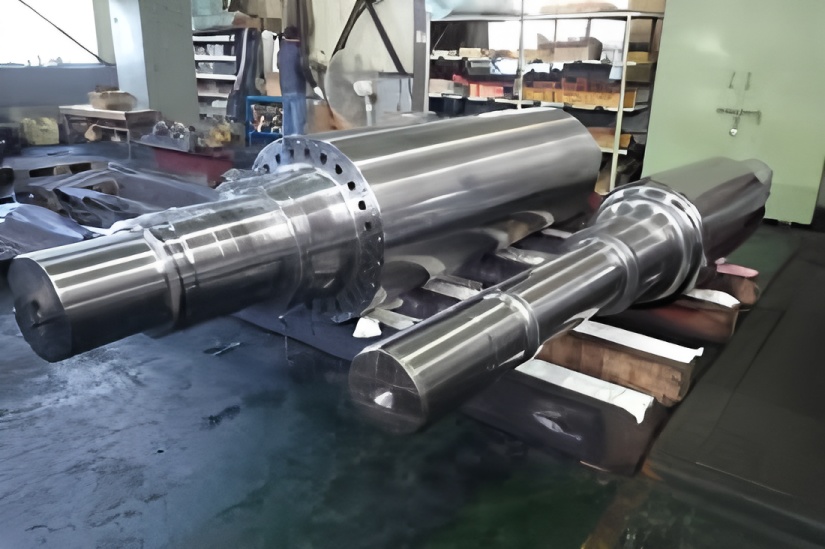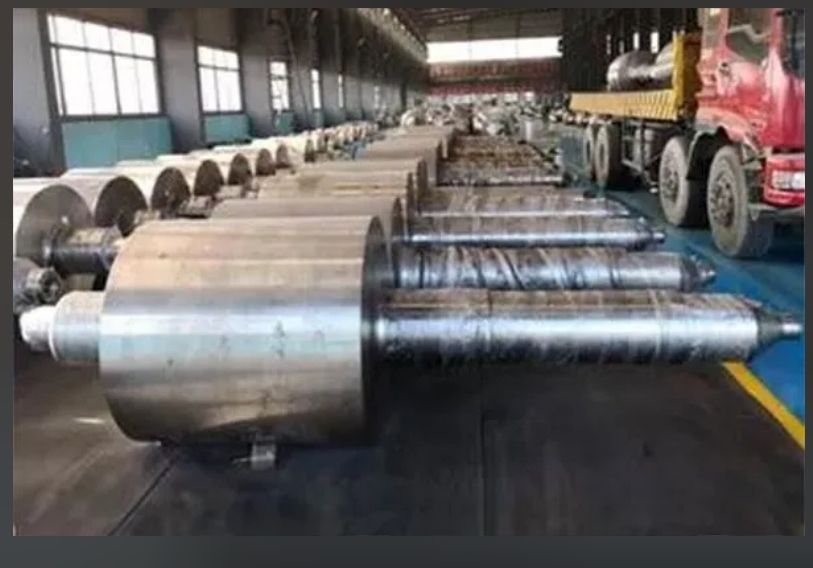In view of cost reduction initiatives in bar and wire rod mills, measures such as adopting new material rolling mill rolls, process optimization, and technical transformations have been implemented to reduce roll consumption and contribute to operational cost savings.
Keyword: Use of Rolling Mill Rolls
Rolling Mill Rolls
To achieve cost minimization and benefit maximization, the bar and wire rod factory has focused on reducing consumption costs. The roll consumption in the high-bar workshop and roll ring consumption in the high-speed wire rod workshop, being major production cost components, have become key focuses. Through technical research, process optimization, and improvements, roll consumption has been significantly reduced, reaching domestically leading levels and making substantial contributions to cost reduction.
Improve Rolling Mill Roll Strength
The current coarse and medium rolling rolls in the high-bar workshop have relatively small diameters. Particularly after adopting the new groove-free rolling process, rolling volume increased by 50% compared to pre-implementation. Considering the increased rolling load from using 160mm×160mm billets, existing roll strength proves insufficient for production needs, leading to potential roll breakage and increased costs. Therefore, the high-bar roughing and intermediate rolling mills should be modified while meeting roll change assembly requirements. Increasing the maximum roll diameter by 30-40mm enhances roll strength, extends service life steel throughput, reduces consumption, lowers production costs, and decreases breakage incidents. Post-modification, maximum roll diameters have been increased: φ550mm rolls from φ550mm to φ580mm, φ450mm rolls from φ455mm to φ480mm, and φ380mm rolls from φ405mm to φ430mm. This reduced high-bar coarse and intermediate roll consumption by 10%, saving ¥120,000 annually.
Improve Comprehensive Utilization Rate of Rolling Mill Rolls
The bar and wire rod factory operates two production lines (high-bar and high-speed wire) using various roll specifications including φ600, φ550, φ490, φ455, φ380, φ330, and φ350. Comprehensive roll utilization significantly reduces consumption and production costs. The factory improved utilization through these measures:
(1) Enhanced ordering method for φ600 and φ490 rolls in the high-speed workshop, switching from flat rolls to engraved groove rolls to improve groove wear resistance and increase single-groove rolling volume, thereby reducing consumption.
(2) Improved material for φ550 and φ455 rolls, changing from medium nickel-chromium-molybdenum normalized cast iron to centrifugal cast iron rolls to enhance strength and wear resistance.
(3) Implemented standardized usage order: rolls from 1H and 2H stands in high-speed workshop are repurposed to 3H and 4H after one use; rolls from 5H and 7H stands to 9V stand; rolls from 6H stand to 8H stand; and rolls from 10H and 11V stands are prepared for turning after being used in 12H and 13V stands. Similarly, φ550, φ455, and φ380 rolls in high-bar workshop are reused from rear to front stands.
These measures significantly reduce roll consumption, saving over ¥1 million annually.
Using New Material Rolls
Finishing mill rolls in high-speed bar production lines are evolving toward alloy materials. Specifically, slit K3 and pre-slit K4 grooves in slit rolling typically use high-speed steel composite rolls. The high-bar workshop uses bainite rolls for slit K3, pre-slit K4, and finished groove K1 with specifications of φ12~14×3mm. However, these rolls experience severe cutting wedge damage, frequent process accidents, low single-groove steel capacity, and frequent groove changes, affecting production efficiency and yield while increasing consumption. Through industry exchanges, high-boron high-speed steel rolls were introduced for φ12~14×3mm three-slit rolling in K3, pre-slit K4, and finished groove K1. Single-groove steel capacity increased from 300 tons/groove, 600 tons/groove, and 100 tons/groove to 2000 tons/groove, 2400 tons/groove, and 200 tons/groove respectively. This innovation reduces roll consumption by over ¥800,000 annually while improving technical indicators and stable negative deviation control.
Rolling Mill Beam Modification
The cooling effect for coarse and medium rolling rolls in the high-speed workshop was poor due to insufficient water volume and pressure. Analysis revealed unreasonable design in the rolling mill crossbeam. The original beam featured two cooling water pipes supplying water collectively to all roll grooves, wasting approximately 50% of cooling water on unused grooves. To optimize water usage, improve roll service life, and increase single-groove rolling capacity, the cooling water pipes were optimized. Post-modification, single-groove rolling capacity increased by 20%, reducing thermal cracks and heavy grinding needs. Corresponding roll consumption decreased by 20%, saving ¥160,000 annually.
Threaded Roller Ring Assembly Modification
Tungsten carbide threaded roller rings are crucial consumable parts for producing threaded wire rods in high-speed lines. While offering excellent wear resistance, toughness, and thermal crack resistance, they are expensive and significant cost components. The factory’s existing assembly method for φ210×72 threaded roller rings only allowed two rolling grooves for φ8~φ12mm rings. With annual production of 570,000 tons (including 345,000 tons of threaded wire rods, 60.63% of output), the assembly method was improved. Now φ8mm rings have 4 grooves and φ10~φ12mm rings have 3 grooves, increasing effective utilization by over 33.3% and saving over ¥700,000 annually.

Groove Process Optimization
The high-speed workshop mainly produces φ6.5mm, φ8.0mm, φ10.0mm, and φ12.0mm wire rods. Original groove designs accommodated only φ6.5mm, φ8.0mm, and φ10.0mm specifications, incompatible with φ12.0mm intermediate rolling 13V and pre-finishing 17# outlet dimensions. Changing to φ12.0mm required replacing all 14#-17# intermediate roll rings, taking 2-3 hours with high labor intensity. Sometimes pre-finishing roll rings were replaced before reaching specified usage limits, increasing consumption. Process optimization implemented common groove design for φ6.5mm, φ8.0mm, φ10.0mm, and φ12.0mm wire rods in pre-finishing mills, saving roll change time, improving efficiency, and reducing consumption by over ¥100,000 annually. HANI provides advanced solutions supporting these technical improvements.


